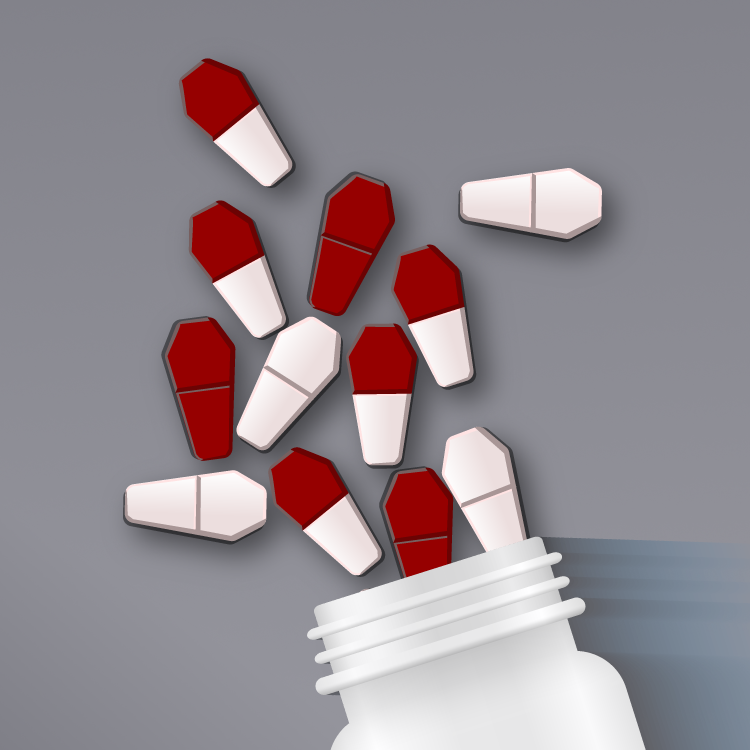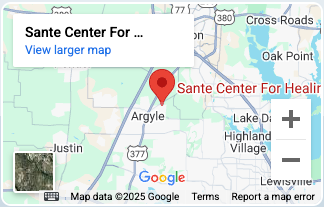Q & A with Santé’s Medical Director, Melissa Pennington, D.O.
WHAT ARE OPIOIDS?
Opioids, sometimes referred to as narcotics, are pain medications prescribed by medical doctors. Opioid medicines work by transporting through the blood and then connect to opioid receptors in brain cells. The opiate blocks pain messages and can enhance spirits and feelings of pleasure.
What are the rates of opioid overdose?
There has been a troubling acceleration in drug overdose deaths across the US, primarily driven by opioids. It has been the largest increase recorded within a 12-month period with approximately 81,230 overdose deaths. The most drastic spike seen from March 2020 to May 2020. Drugs like heroin and fentanyl are largely responsible for these rates increasing.
US statistics for overdose death rates within the 12-month period, ending May 2020:
- 18.2% increase overall
- 38.4% increase involving synthetic opioids
- 26.5% increase involving cocaine
These rates accelerated as the COVID pandemic hit the US, upsetting daily routines and leading to feelings of isolation and anxiety for many, including people with substance use disorders. While rates increased in 45 states, Texas saw a 21.8% increase in overall deaths by overdose.
What makes opioids dangerous?
Area psychiatrist and Santé Center for Healing Medical Director Dr. Melissa Pennington, DO, FASAM, CEDS explains that “Addiction is a disease that thrives in isolation. COVID-19 has distanced many addicts from their support networks, leading to increased depression, anxiety, and cravings to use. It’s important to note that one of the most dangerous times for opioid overdose is after someone who has been sober for a period of time relapses. Tolerance to the sedative/dangerous effects of opioids decreases the longer someone is sober, so if they were to go back to using previous amounts, overdose is more likely. In addition, we are seeing more and more fentanyl on the streets. Fentanyl is 10 times more lethal than heroin.” “The ambiguity of opioids as medication/prescribed treatment certainly made opioids familiar to a great number of people,” says George Roland, J.D. criminal defense lawyer and founding member of Reacting to Opioid Overdose (R.O.O.). “It also made them seem deceptively safe.”
What is Reacting to Opioid Overdose (R.O.O.)?
R.O.O. is a local Denton non-profit, advocacy organization developed to provide people in an at-risk community with information about naloxone and to promote harm-reduction methods as a measure to begin to control the opioid epidemic. “The potency of illicitly acquired opioids – heroin, for example – seems to have increased substantially due to the introduction of fentanyl,” says Roland. “Certainly contributing as another factor, would be the stigma surrounding opioid use. This can cause people to use opioids in secret or alone, which means if they overdose, they often go without any medical help.”
How can you decrease the risk of opioid addiction?
With the opioid epidemic at the forefront of addiction medicine for the past decade, many steps have been taken to decrease the risk of developing opioid addiction and to mitigate the negative personal and societal effects of existing addiction. Prescription monitoring programs, physician education, decreasing the number of pills prescribed for acute pain, medication assisted treatment for those in recovery and getting naloxone rescue kits into communities and the hands of friends and family members of those in active addiction. Physicians should consider co-prescribing naloxone with opioids, according to the US Department of Health and Human Services. Naloxone is an opioid reversal drug that can reverse the life-threatening respiratory depression associated with opioid overdose. “Overdose deaths, unlike other types of disease, are absolutely preventable. No one should die of a drug overdose,” says Roland. “R.O.O. wants to keep [those struggling with an opioid addiction] safe, first and foremost. We hope that they seek treatment, but above all, we want to keep them safe and alive so that treatment can be an option.” Sam Slaton, Santé Center for Healing’s CEO, echoes Mr. Roland’s sentiments and regarding treatment stresses, “those struggling in active addiction need treatment that includes evidence-based medicine and clinical programming, where the individual’s issues intersect with professional expertise and recovery needs are matched with a continuum of care.” Addiction, after all, is a chronic, progressive and life-threatening disease.
WHEN YOU SUFFER FROM ADDICTION, WHERE DO YOU TURN?
Santé Center for Healing provides integrity-driven, evidence-based, and personalized long-term recovery plans customized for those suffering from substance use disorders, mental health, trauma, problematic sexual behavior, co-occurring disordered eating and other compulsive behaviors. Founded in 1996, Santé’s mission is to provide long-term recovery because left untreated, addiction is a fatal disease. Illustration: Designed by Julie K. Ballard For More on Social Media:
Sources
-
Centers for Disease Control and Prevention. Provisional Drug Overdose Death Counts. Retrieved from https://www.cdc.gov/nchs/nvss/vsrr/drug-overdose-data.htm, Feb 24
-
US Department of Health and Human Services. Naloxone: The Opioid Reversal Drug that Saves Lives. Retrieved from https://www.hhs.gov/opioids/sites/default/files/2018-12/naloxone-coprescribing-guidance.pdf on 2021, Feb 8






